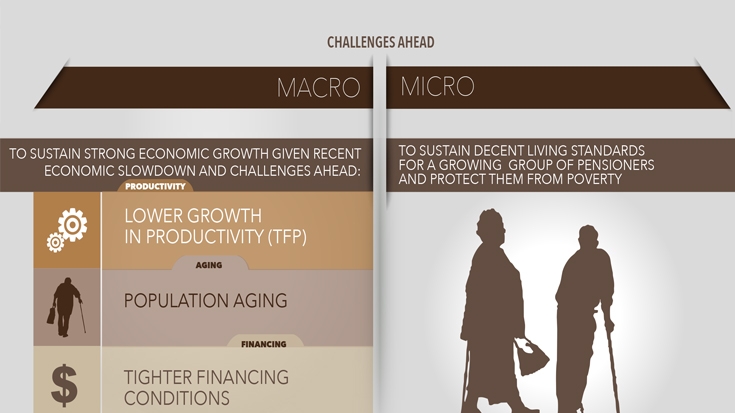WARSAW, October 20, 2014 – Growth boosted by increased household and public savings can help the Polish economy stay on a path of sustained long-term economic development, says a new World Bank report, Poland Country Economic Memorandum (CEM): Saving for Growth and Prosperous Aging. Recent economic trends in advanced and emerging economies point to a lukewarm growth outlook. Against the backdrop of rapidly aging populations and slowing productivity growth, Poland too wrestles with the challenge of revisiting its growth model.
The report emphasizes the importance of national saving in promoting economic growth and development. Sustaining growth in Poland, with remaining infrastructure gaps and an aging population, will require further investment as well as continuous improvements in productivity. In order to keep the balance of payments and net international investment position intact, the increased level of investment spending needs to be financed by increased savings. The report says that in order for Poland to sustain its per-capita economic growth at 3.5 percent annually, the national saving rate needs to increase from below the current 18 percent to 23 percent by 2030, provided a strong total-factor productivity (TFP) growth continues.
“Poland’s economy has grown impressively over the last two decades and the country has become the European growth champion. Now the main challenge is to ensure that these achievements are sustained going forward so that income levels in Poland continue to converge with those in the rest of Europe,” said Marina Wes, World Bank Country Manager for Poland and the Baltic Countries.
The rapid aging of the Polish population not only acts as a possible brake on growth, but also raises challenges for the sustainability of the pension scheme. The pension reform of 1999 made the pension system fiscally sustainable and fair, but the cost of achieving this will be a substantial fall in the average replacement rate. Additional transfers of part of national income to pensioners will be needed to prevent from old-age poverty. Part of the solution is individual saving and asset accumulation. The report demonstrates that the current working age population will have to save an additional 10 percent of their annual earnings to guarantee current replacement rates.
“With this report we hope to stimulate public discussion and help policymakers design appropriate measures to support saving-based growth agenda in Poland,” said Emilia Skrok, Senior Economist and the author of the report.
A number of complementary policy changes are likely to be needed to achieve a sustained increase in national saving in Poland. Government policy choices influence how individuals save. According to the report, policies to mobilize national savings in Poland will need to cover five areas: i) policies to support incomes and growth; ii) policies to encourage households to save; iii) policies to limit government dis-saving; iv) policies to substitute for foreign savings; and, v) policies to develop a long-term local currency capital market. Hence, the recommended policies cover a wider range of measures aiming at increasing the employment and quality of education, strengthening the balance of payments, limiting fiscal dis-saving, encouraging banks to be more assiduous in soliciting deposits and domestic borrowings, improving tax treatment of assets, developing a more functional domestic capital market, and encouraging individuals to save more for their own retirement as well as for precautionary purposes. In the case of the latter, there is a strong case for introducing a new savings product to give new life to the third pillar of Poland’s pension system.

